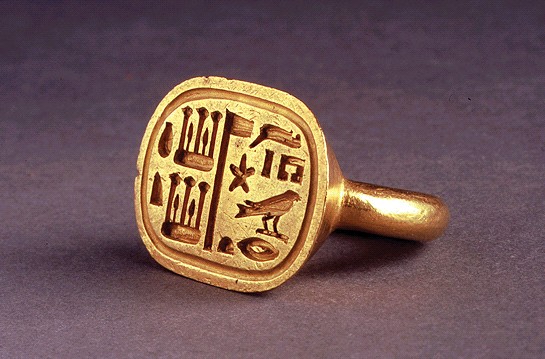
|
GOLD
RING OF SHESHONQ
26th Dynasty, 6th Century BC |
||
|
||
|
All images reproduced by permission of the Trustees of the British Museum. Informational text provided by the British Museum. The History Place Terms of Use: Private home/school non-commercial, non-Internet re-usage only is allowed of any text, graphics, photos, audio clips, other electronic files or materials from The History Place™ |
